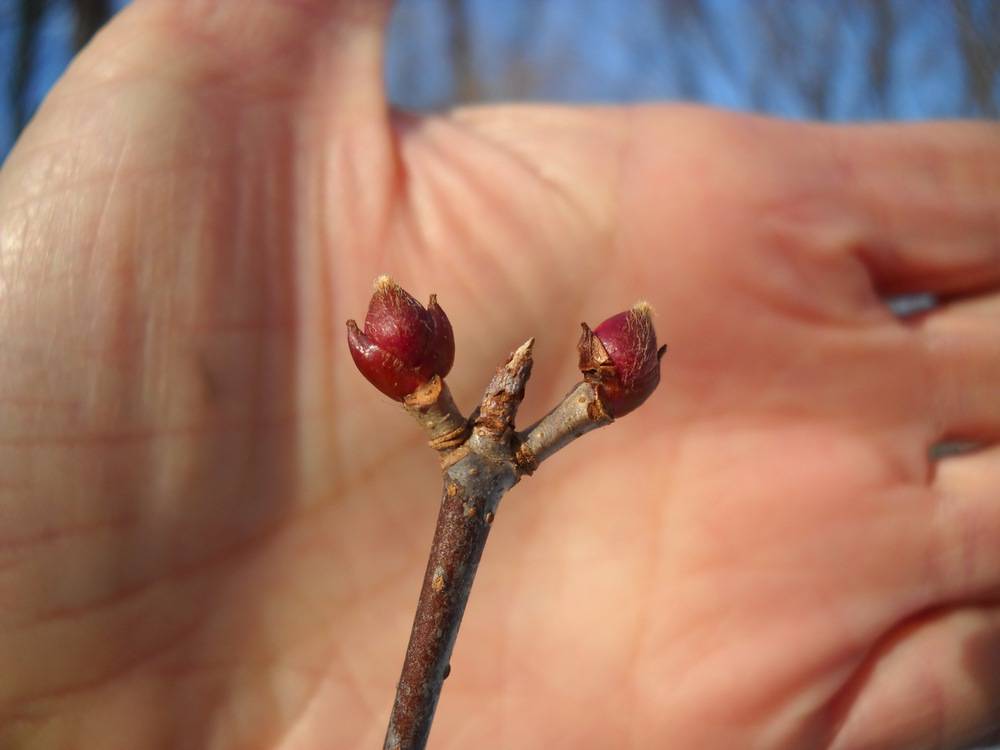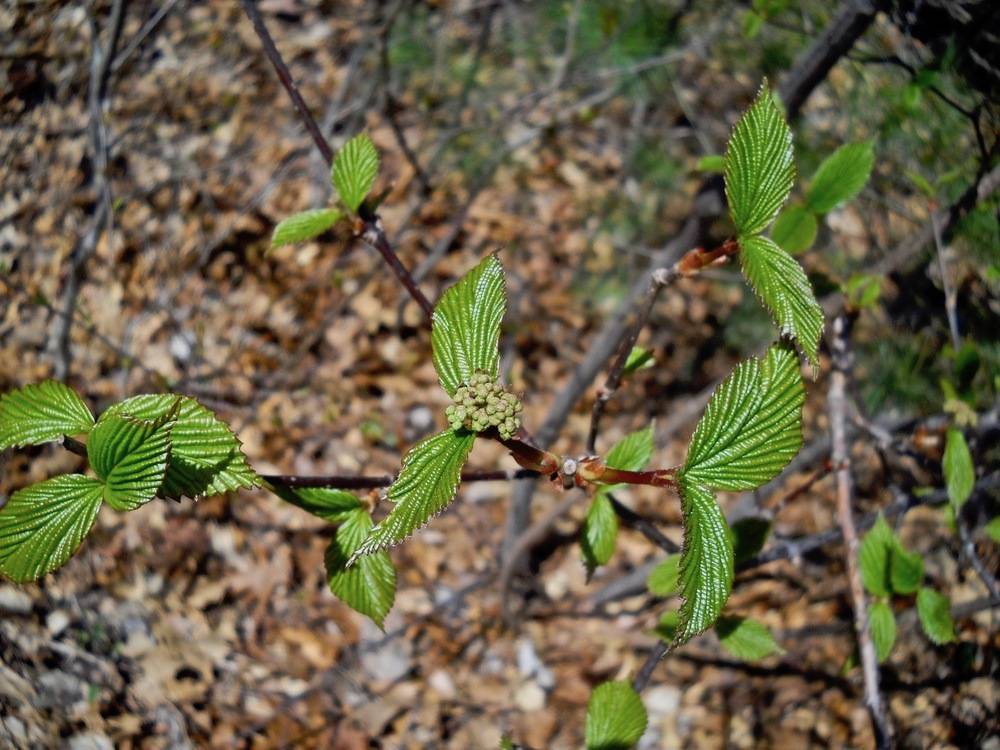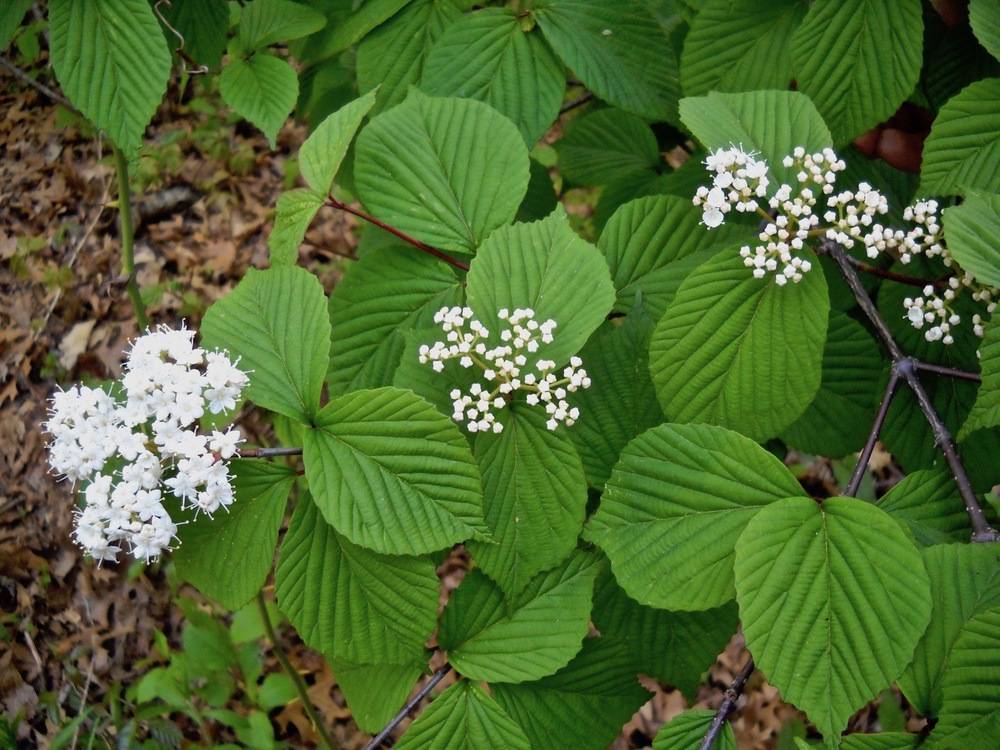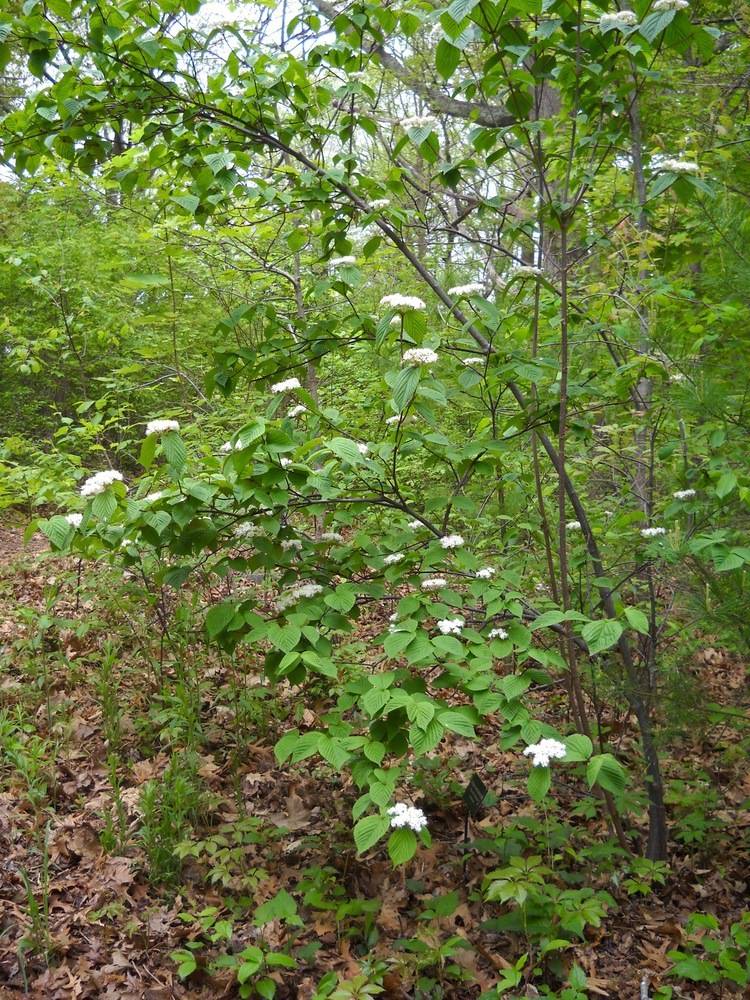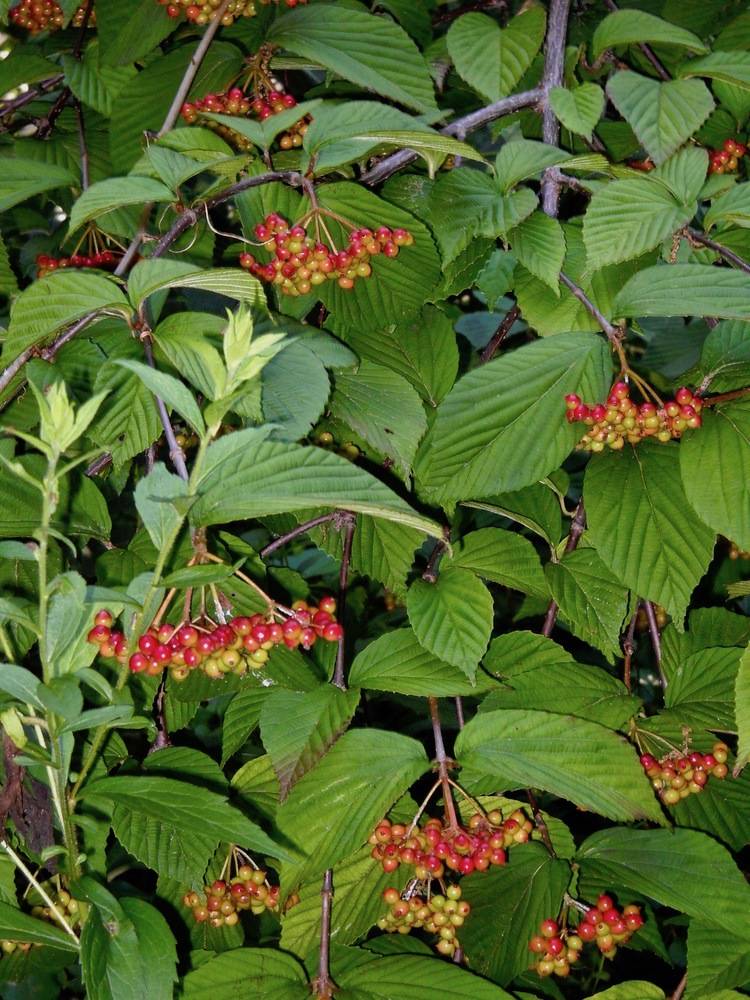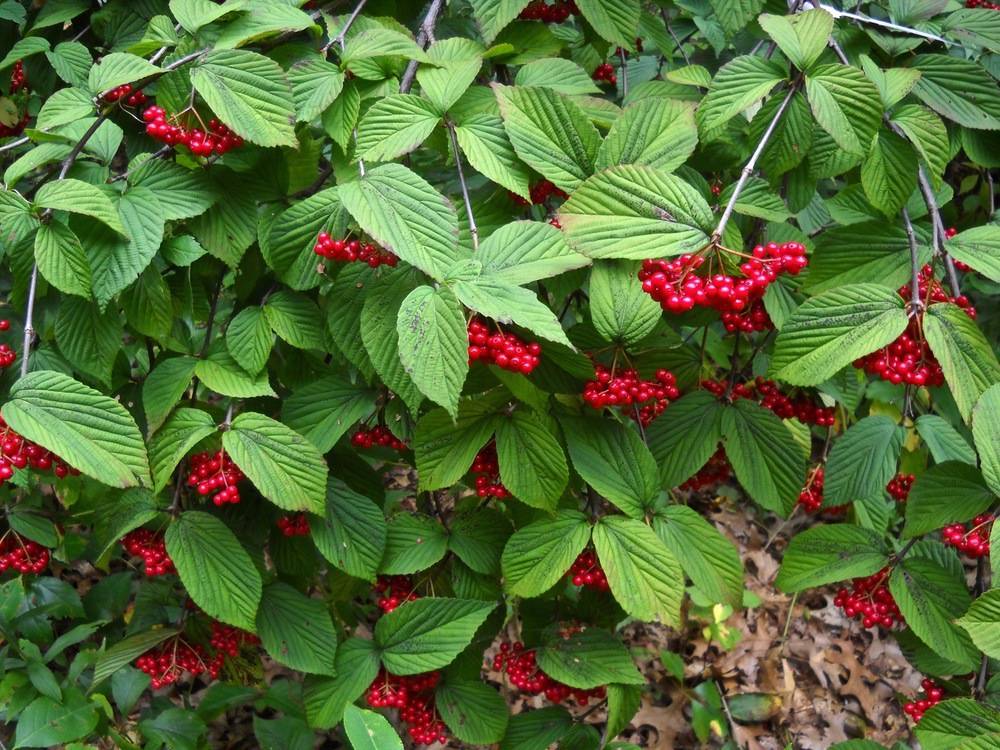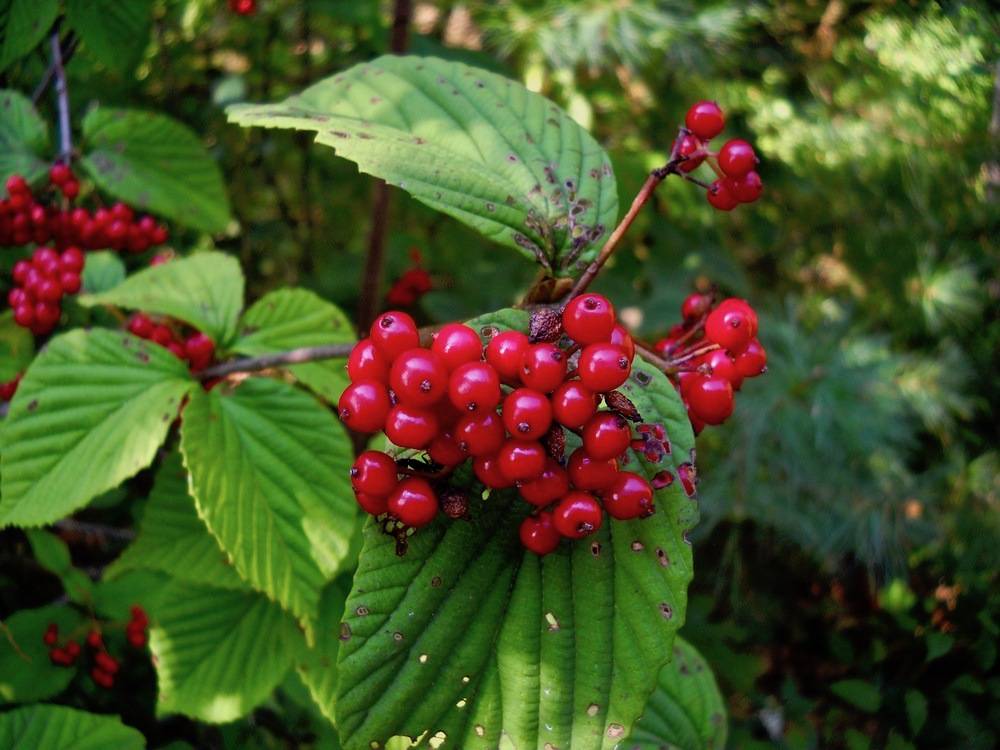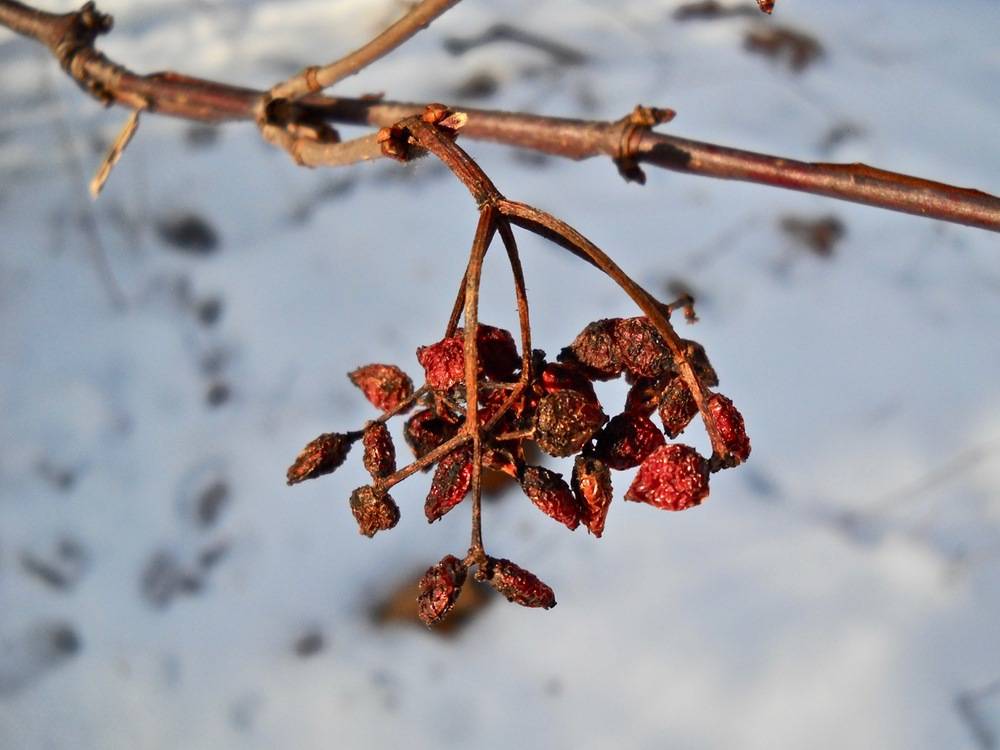Wright's arrowwood
Wright's arrowwood, like its close relative linden arrowwood, is a shrub indigenous to China, Japan and Korea. Linden arrowwood was introduced to North America in the early 1800's as an ornamental for its showy flowers and fruits. It has naturalized so successfully in eastern North America that it was recently listed as an invasive species in Connecticut and Virginia. In contrast, Wright's arrowwood has never been recorded for Rhode Island and its occurrence at Salter Grove represents a state record for the species.
There are only two individuals of Wright's arrowwood at Salter Grove. The larger plant grows on level ground near trail marker U1 on the Upland Trail, whereas the smaller plant is perched on the now overgrown rubble pile southeast of the entry to the causeway.
Wright's arrowwood is in the genus Viburnum. Because Viburnum flowers are unable to self-fertilize, horticulturalists generally suggest growing several plants close together to ensure a good fruit crop. Available references have not indicated whether Wright's arrowwood is also self-incompatible.
In early spring, the large clusters of white flowers attract hordes of insects seeking nectar and pollen. The same pollinators probably end up visiting both plants because there is not much else flowering at this time. By autumn, despite being hundreds of feet apart, both plants display large clusters of red fruits that are very attractive to birds.

